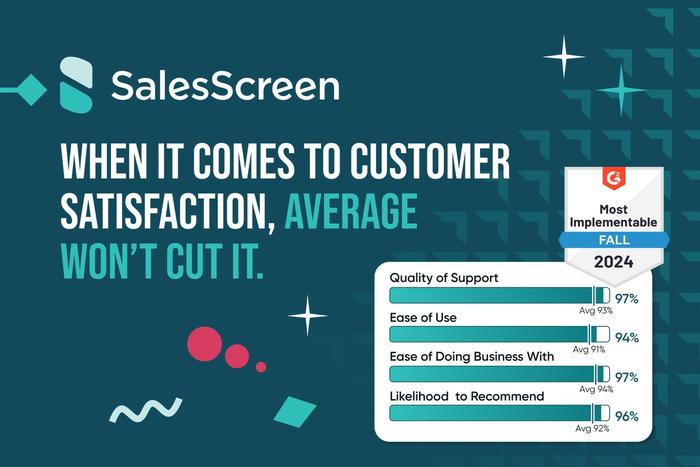Unless you’re a gamer (or a scientist), it’s quite possible that you have a negative perception of gaming in general. Gaming is such a waste of time; there are much better, more productive things that people can do with their lives. Honestly? You’re not too far off the mark there. There’s just one teeny detail that you have wrong. Although there are definitely more productive things that we can do, the methodologies, tools, and motivational factors found in games can help drastically boost productivity in the workplace.
Gaming in the workplace?! That must be a gimmick, a fad — that could never encourage workplace productivity! Well, let’s take a look at whether gamification in the workplace actually works or if it’s just a passing trend.
Is Gamification Just a Gimmick?
Adding gamification to the workplace is a great way to bring fresh inspiration and break the monotony of routine. The added bonus is that studies have shown an increase in motivation and output from workers in gamified workspaces. However, even the most well-executed plans lose their initial appeal. Gamification needs to have a purpose, or it will quickly become just another part of the routine.
While gamification has tons of promise, it must be refreshed frequently to avoid boring users. There’s a reason why a game such as World of Warcraft is still so popular almost 20 years after its initial release. The focus on revamping its core story and developing deeper features than simply gaining experience points or upgrading skills is what has kept games like these successful for so long. But, it’s challenging to do this since it involves a team of individuals with expertise in psychology, programming, business strategy, and other fields, but that's what it takes to grab people's attention and keep a hold of it these days.
So, to bring ourselves back to the question, “Is gamification just a gimmick?” — the short answer is definitely not. The potential of gamification in the workplace is boundless, and its benefits proven through countless studies. The only thing is that it’s not easy to pull off because it requires effort to keep “gameplay” fresh and exciting over prolonged periods of time.
Benefits of utilizing gamification at work
Anyone who tells you that gaming is a waste of time hasn’t caught up with modern science. Countless research studies have been conducted on the effects of gaming on our brains, with many of these studies concluding that even just an hour of gaming can boost a person’s focus — although it’s still inconclusive as to how long a person’s focus is boosted. Since gamification is based on gaming concepts, it’s not too farfetched to say that there are also benefits to using gamification in the workplace.
In fact, there have been studies into the benefits of gamification specifically, and thus far, the results have been positive.
1. Encourage productivity
Since sales gamification is both entertaining and rewarding, it appeals to basic human needs and motivations. Among them are the desires to belong, to be noticed, to be valued, and to be rewarded monetarily. Gamification has been shown to satisfy all of the above.
Studies have shown that with gamification in the workplace, productivity increases by as much as 90%. This is because people are naturally drawn to gamification since it satisfies their need for praise and validation. Using sales gamification, you can infuse best practices into your reps' daily routines while also keeping your sales team motivated and always looking for the next achievement or badge to acquire.
2. Boost mental health
Whenever we complete a task, we enjoy a boost of happiness thanks to our brains producing a dopamine hit. This applies to all aspects of our lives — checking something off a to-do list, finally completing that DIY project you’ve been working on all week, or even completing a quest in a game. The use of gamification to boost interest in and use of tools intended to improve psychological health and general well-being is gaining popularity.
Establishing and customizing incentives, awards, or recognition to appeal to your staff's individual motivational needs is a crucial investment. To ensure that everyone feels appreciated, you can also use a mix of incentives, prizes, and recognition. Rewards might be monetary, such as a wellness stipend or gift card, or symbolic, such as sharing the names of challenge winners with the staff. Together, they form a feedback loop that has been shown to help people maintain their new healthy behaviors and keep doing the things that got them there.
3. Develop bonds
The competitive element present in many gamification elements promotes teamwork and knowledge retention by pitting workers against one another. Making workers feel like they belong is of paramount importance, especially when trying to develop a more positive company culture.
We know that when people with common goals and ideals work together, they can accomplish almost anything. The introduction of gaming elements into the workplace facilitates this by linking up workers who share common interests. These days, workers want to feel like they have a say in their workplaces, and this is a fun way to deliver on that interest. Because of this, businesses should foster a positive environment where employees and management alike can develop professionally.
3 Interesting Applications of Gamification
Whether we realize it or not, gamification is actually present in our day-to-day lives. From completing the rings on our Apple Watch or hitting 10,000 steps for our Fitbit to the thrill of getting just 10 likes on our latest Instagram post or even throwing a funny filter onto your Friday company Zoom meeting, those are all small aspects of gamification that we come across daily.
We’d like to bring up a few interesting ways that people around the world are applying gamification concepts in interesting ways:
1. Health
Jane McGonigal, an American game designer, created "SuperBetter" to assist people with overcoming mental health issues like depression, anxiety, and traumatic brain injury. After signing up, users will have access to tools for dealing with real-world issues.
Through this form of gamification, you can reach your weight goals, train for a marathon, boost your happiness, and achieve other similar goals with the game's guidance as you face challenges and overcome them. Positive strategies for dealing with adversity in life are also taught on SuperBetter.
2. Workplace Training
A Dutch company also developed a novel software called "SmartGate" to educate a workforce on the intricacies of a cutting-edge logistics platform. As an alternative to more conventional approaches like meetings or training seminars where people quickly lose focus and struggle to retain information, they used gamification principles.
The issue that they were looking to solve was that there were so many airport logistics companies that it was challenging to get them all together for training and meetings. Instead, they used gamification, which streamlined the process, reduced unnecessary steps, and saved time and money. Interest and participation came from far beyond the borders of the Netherlands, including players working at other airports and students at different logistics programs.
3. Boosting Productivity
By now, you shouldn’t be too surprised that companies have actually developed gamification software to help employees boost productivity at the workplace. One such company is us, SalesScreen. Through a variety of different experiences, our software encourages your workforce to keep up with KPIs — even outperform expectations — by facing challenges and competing with fellow team members to achieve a coveted prize.
SalesScreen pulls information directly from your CRM to create live sales competitions. Since our software allows for inter-office sales competitions, even global corporations can reap the rewards of bringing gamification to the workplace.
Gamification is here to stay
The proof is in the pudding: gamification in the workplace is far from being “just a phase,” and it’s here to stay. Gamification hit the peak of the Gartner hype cycle just a decade ago, but its use within the workplace environment isn’t close to dying out anytime soon. There are plenty of benefits to companies utilizing gamification software within their day-to-day, but it’s not without some effort.
Ensuring that the gamification process is refreshed by introducing different competitions or prizes is one way to keep the motivation train chugging along. In the end, key decision-makers need to be just as involved if they’d like their employees to maintain their productivity.










